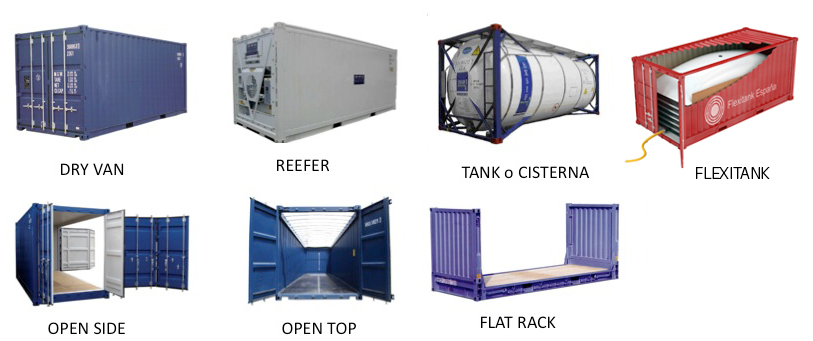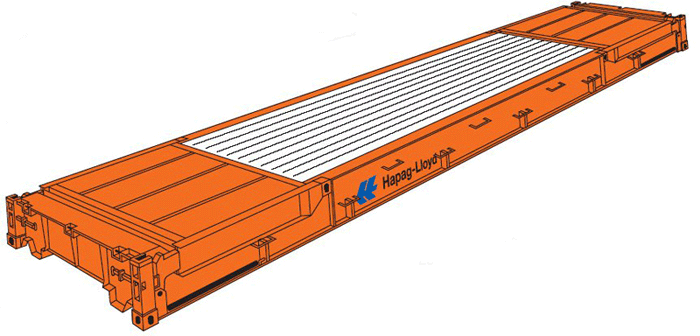

DEFINATION :Totally enclosed and Waterproof, having a rigid proof, rigid side walls and floor, having at least one of its end walls equipment with doors and intended to be suitable for transport of cargo of the greatest possible variety.
USES :This is by far the most common type of Container. It is suitable for the carriage of most types of "Dry" goods, including those packed in Boxes, Cartons, Cases, Sacks, Bales, Pallets, Drums, etc...

DEFINATION :Thermal Container equipped with an or Electrical Appliance (mechanical compressor) for the purposes of cooling or heating the air within the Container.
USES :The Refrigerated and heated Containers are equipped with a mechanical refrigeration unit capable of transporting cargo at temperatures from " -25 °C to +25 °C ", accurate to a tenth of degree.These types of containers are mostly utilized for carriage of food stuff, milk products, poultry products, pharmaceuticals, etc..

DEFINATION :This type of Container except that it has no rigid roof but may have a flexible and movable or removable top end transverse members above their end doors.
USES :These Containers are primarily used to carry heavy and/or bulky finished products, whose handling and loading can only be performed with a crane or a rolling bridge. Tiltable half-height open top Containers are specially designed to carry bulk minerals.Removable roof bows and Tarpaulin.

DEFINATION :Compared to fixed end types collapsible flat - racks which have end walls that fold. The flush folding collapsible flat-rack, the most sophisticated of its type has end walls which fold flush with the base.
USES :Flastracks are dedicated for the carriage of items which are heavy, bulky and those which are over height and/or over width. Their base ids often designed to transport heavy material. Also permit the transportation of over length cargo.

DEFINATION :Platform based container without any permanently fixed longitudinal load-carrying structure b/w ends other than at the base.
USES :This type of Container is mainly used to carry heavy and bulky semi-finished goods, as well as out of gauge cargo. When laid side by on the deck or in the hold of container ships, they can be used to transport non-containerizable cargo. BARRELS AND DRUMS, CRATES, CABLE DRUMS, OUT OF GAUGE CARGO,MACHINERY, AND PROCESSED TIMBER...
The approved storage classes must also be marked. The most sensitive product packaged is used as a basis for determining the storage classes.The supplier of the goods must specify the respective storage class. The selected storage class shall also be documented in plain text in an appropriate place in the accompanying documents of the goods (e.g. delivery note or packing list).

If the package needs to be handled in a particular way, the packaging must be sufficiently marked according to the handling properties (e.g. fragile, top-heavy) to ensure it is handled appropriately. Figure shows the markings which should be used.
